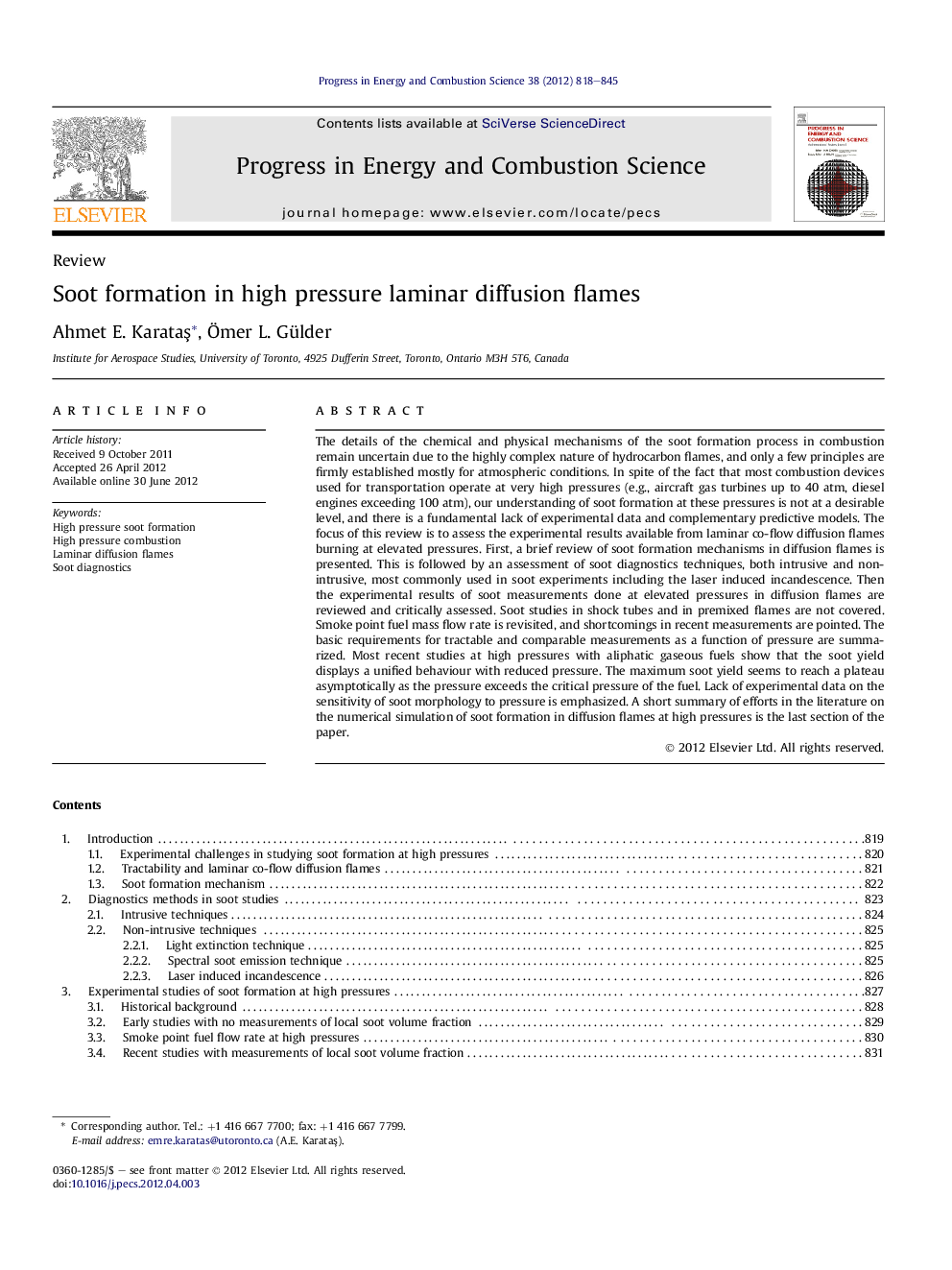| Article ID | Journal | Published Year | Pages | File Type |
|---|---|---|---|---|
| 241692 | Progress in Energy and Combustion Science | 2012 | 28 Pages |
The details of the chemical and physical mechanisms of the soot formation process in combustion remain uncertain due to the highly complex nature of hydrocarbon flames, and only a few principles are firmly established mostly for atmospheric conditions. In spite of the fact that most combustion devices used for transportation operate at very high pressures (e.g., aircraft gas turbines up to 40 atm, diesel engines exceeding 100 atm), our understanding of soot formation at these pressures is not at a desirable level, and there is a fundamental lack of experimental data and complementary predictive models. The focus of this review is to assess the experimental results available from laminar co-flow diffusion flames burning at elevated pressures. First, a brief review of soot formation mechanisms in diffusion flames is presented. This is followed by an assessment of soot diagnostics techniques, both intrusive and non-intrusive, most commonly used in soot experiments including the laser induced incandescence. Then the experimental results of soot measurements done at elevated pressures in diffusion flames are reviewed and critically assessed. Soot studies in shock tubes and in premixed flames are not covered. Smoke point fuel mass flow rate is revisited, and shortcomings in recent measurements are pointed. The basic requirements for tractable and comparable measurements as a function of pressure are summarized. Most recent studies at high pressures with aliphatic gaseous fuels show that the soot yield displays a unified behaviour with reduced pressure. The maximum soot yield seems to reach a plateau asymptotically as the pressure exceeds the critical pressure of the fuel. Lack of experimental data on the sensitivity of soot morphology to pressure is emphasized. A short summary of efforts in the literature on the numerical simulation of soot formation in diffusion flames at high pressures is the last section of the paper.
